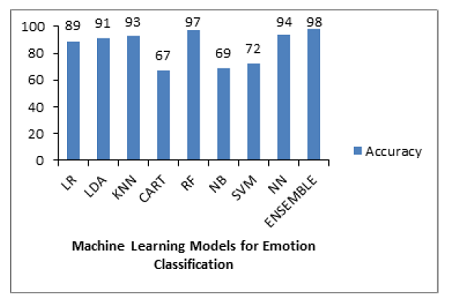


Indian Journal of Science and Technology
DOI: 10.17485/IJST/v14i21.2261
Year: 2021, Volume: 14, Issue: 21, Pages: 1740-1747
Original Article
Received Date:20 December 2020, Accepted Date:28 May 2021, Published Date:17 June 2021
Background: Having experienced more than a year of pandemic, a variety of applications such as online classrooms, virtual office meetings, conferences, online games, Social media & Networks, Mobile applications, and many other infotainment areas have made humans live with gadgets and respond to them. However, all these applications have an impact on human behavioral transformation. It is very significant for employers to understand the emotions of their employees in the era of online office & work from home concept to increase productivity. Learning and identifying emotions from the human face has its application in all online portals when physical contact could not be achieved. Ojbective: Human Facial emotions can be learned using enormous feature descriptors that extract image features. While local feature descriptors retrieve pixel-level information, global feature descriptors extract the overall image information. Both of the feature descriptors quantify the image information, however, they don’t provide complete and relevant information. Hence, this research work aims to improve the existing local feature descriptor to perform globally for emotion recognition. Method: Our proposed feature descriptor, Patch-SIFT collects features from multiple patches within an image. This strategy is evolved to globally apply the local feature descriptor as a hybridization paradigm. The extracted features are trained and tested on an ensemble model. Findings: The Proposed Feature descriptor (Patch-SIFT) performance with ensemble model is found to produce an improved accuracy of 98% compared with existing feature descriptors and Machine learning classifiers. Novelty: This research work tries to evolve a new Feature descriptor algorithm based on SIFT algorithm for an efficient emotion recognition system that works without the need for any additional GPU or huge dataset.
Keywords
Classification, Ensemble, Feature descriptor, PatchSIFT
© 2021 Hema & Kannan.This is an open-access article distributed under the terms of the Creative Commons Attribution License, which permits unrestricted use, distribution, and reproduction in any medium, provided the original author and source are credited. Published By Indian Society for Education and Environment (iSee)
Subscribe now for latest articles and news.